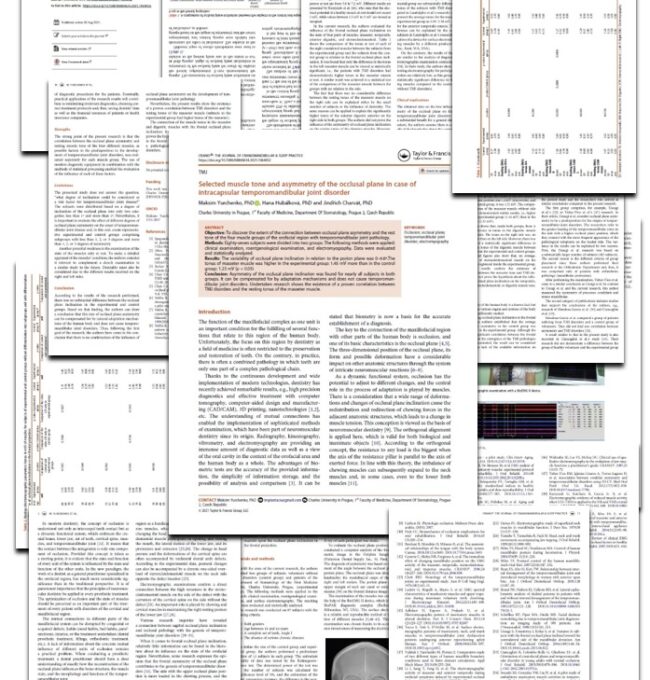

The study focused on examining the connection between occlusal plane asymmetry and the intracapsular pathology of the temporomandibular joint (TMJ). It was important to explore the relationship of four orofacial muscle groups (m. masseter, m. temporalis, m. digastricus, and m. sternocleidomastoideus) to the inclination of the occlusal plane in a frontal projection, particularly their resting muscle tone.
Recently, there has been a strong emphasis on studying the dysfunctions of masticatory muscles in TMJ disorders, where studies have found muscle dysfunctions in 82-90% of cases. Especially in extracapsular TMJ pathologies, orofacial muscle dystonia is considered a key factor in the pathogenetic chain. However, the role of these muscle groups becomes significantly more crucial in intracapsular diseases of the joint, as their importance is not immediately obvious.
CRANIO®, The Journal of Craniomandibular & Sleep Practice, Srpen 2021
Abstract:
https://www.tandfonline.com/doi/full/10.1080/08869634.2021.1964052
Parking near the clinic
You can park near the clinic in mixed and residential areas.

Purple zone (Mixed)
The purple zone, marked with a discontinuous white line and a traffic sign with a purple stripe is meant for so called mixed parking. Owners of a valid parking permit may use the purple zone without limitations. Others may use it for a maximum of 24 hours and only after paying via the virtual parking clock web app or using the parking ticket machine.
Blue zone (Residents)
The blue zone, marked with a blue line (vertical and horizontal signs) is designated for residents. Visitors may use the blue zone for parking only after paying via the virtual parking clock web app (“Virtuální parkovací hodiny”), as there are no parking ticket machines installed in the blue zone. This way of use of the blue zone allows for maximum time of 3 hours.